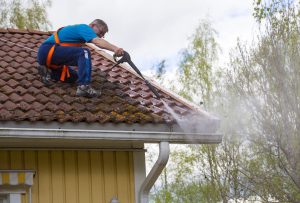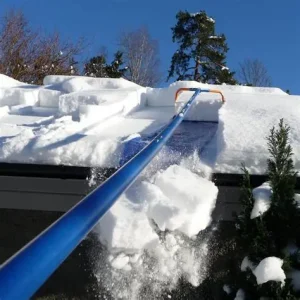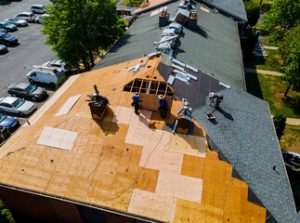The roof holds stories of weather and time. Its surface takes the brunt of seasons without protest. Yet beneath the dirt and debris lies a structure eager to breathe again. Roof Cleaning is not just maintenance but an act of renewal.

Many overlook how cleaning impacts the home’s inner rhythm. Dirt accumulation blocks natural reflection and temperature balance. Once cleaned, the roof begins to regulate better. The energy efficiency it restores subtly transforms the living space.
A clean roof also shapes perception. It speaks of care and unseen discipline. Homes with bright roofs appear calmer and more inviting. There’s harmony when the top reflects the purity of the space below.
The process itself has evolved in remarkable ways. Traditional scrubbing is giving way to softer, eco-conscious techniques. These methods use low-pressure systems and biodegradable agents. The goal now is preservation, not just removal.
Moss, lichen, and algae seem harmless but hide a quiet danger. They hold moisture against shingles, causing rot over time. Once these organisms are removed, the surface becomes stronger again. Cleaning protects the roof’s lifespan while preventing costly repairs.
Newer research explores microbial-resistant coatings. These are designed to prevent regrowth for extended periods. Roof cleaning now intersects with science and material innovation. Each rinse prepares the structure for modern protective layers.
The psychological impact of a clean roof is often ignored. People tend to feel more at peace under a cared-for space. It mirrors the order we desire in our daily lives. Cleanliness above reflects balance within.
Technological tools have made the task safer. Drones assess roof conditions before and after cleaning. This eliminates risks while ensuring detailed inspection. Precision has replaced guesswork in maintenance planning.
Sustainability has become a vital aspect of roof care. Cleaning solutions now aim to be water-efficient and non-toxic. Runoff systems are designed to protect surrounding soil. A clean roof now means a cleaner ecosystem as well.
Modern cleaners consider the material of every roof. Tile, metal, or asphalt each demand distinct handling. The chemistry of the cleanser must align with the surface. This precision prevents erosion and discoloration.
Sunlight interacts differently with clean surfaces. A washed roof reflects more light, reducing indoor heat. This naturally cuts cooling costs in warmer months. It’s a simple step toward more responsible energy use.
There’s also a sensory satisfaction in seeing grime wash away. It reminds us that transformation can be gentle. Water and patience can restore what looked forgotten. That realization carries into how we treat our surroundings.
In architecture, roofs symbolize shelter and stability. Cleaning them renews the promise of protection. It extends not only structure but also spirit. The process feels like tending to the soul of the home.
Roof cleaning today integrates digital planning. Sensors and apps monitor moisture and residue buildup. Predictive alerts signal when treatment is due. Maintenance becomes proactive instead of reactive.
Communities have also embraced collective roof maintenance drives. Neighbors share tools and organize group cleanups. This practice promotes environmental awareness. Shared responsibility strengthens bonds beyond fences.
The surface’s texture reveals much after cleaning. Lines once hidden show craftsmanship and design. Clean roofs regain their original aesthetic purpose. They return to being architectural statements, not just barriers to rain.
Professional cleaning services are shifting toward artistry. Each project is viewed as restoration rather than labor. Attention to detail defines the new generation of cleaners. Every wash is guided by respect for material and structure.
Science continues to explore self-cleaning roof materials. These surfaces mimic lotus leaves, shedding dirt effortlessly. Roof cleaning will soon become less frequent yet more effective. Innovation reshapes what cleanliness can mean.
Weather patterns affect cleaning schedules too. Regions with high humidity need frequent moss removal. Dry areas demand dust control instead. Adapting methods to climate ensures long-term success.
Education about roof care has expanded online. Tutorials teach safe techniques for homeowners. People learn the balance between DIY efforts and professional help. Knowledge spreads faster than stains ever could.
Beyond beauty, clean roofs influence air quality. Mold spores are reduced, benefiting respiratory health. Less organic decay means fewer allergens around homes. The result is cleaner air for those beneath.
The economics of roof cleaning are equally compelling. Routine care prevents early replacements. What seems like a simple task preserves thousands in value. Maintenance proves itself a quiet investment.
Even architects now factor cleaning accessibility into designs. Angles and drainage paths are crafted for easy maintenance. Future structures will require less labor to stay clean. Function and form continue to evolve together.
Clean roofs also enhance urban aesthetics. When skylines shine uniformly, cities feel lighter. Collective cleanliness creates visual harmony. The transformation uplifts entire communities.
Restoration experts view roof cleaning as historical preservation. Each rinse reveals original colors and textures. Heritage buildings regain authenticity through gentle washing. Cleaning becomes a cultural act, not just a practical one.
Microbial ecology is a growing field in roof maintenance. Researchers study how cleaning alters microhabitats. The goal is balance, not sterilization. A healthy roof environment resists decay naturally.
Some roofs use plant-based coatings for protection. These organic compounds form breathable shields. They repel grime without blocking airflow. The method merges technology with natural wisdom.
Cultural symbolism also plays a role. In many traditions, a clean roof marks renewal cycles. It’s part of seasonal rituals tied to purification. Modern cleaning continues this ancient expression of care.
The visual before-and-after of cleaning speaks volumes. It tells a story of hidden potential uncovered. The roof’s revived color shifts the entire home’s character. It’s as though light finds its way back home.
Clean roofs contribute to stormwater management. Dirt and organic waste often clog drainage systems. Regular washing ensures proper water flow. This small act prevents flooding and infrastructure strain.
New biodegradable foams allow efficient grime removal. These solutions cling longer, reducing water use. They dissolve without leaving harmful residues. Cleaning becomes environmentally elegant.
Homeowners are starting to view roof cleaning as mindfulness. Watching dirt dissolve brings calm and focus. The repetitive motion feels meditative. Maintenance turns into a quiet personal ritual.
Every cleaned surface reflects resilience. It shows how renewal can come from care, not replacement. Roof cleaning reminds us that restoration is power. It’s the art of keeping what we have alive.
In the future, roofs may clean themselves through nanotechnology. Microscopic layers could break down pollutants under sunlight. The concept merges cleaning with energy production. Roofs may soon purify both homes and the air around them.
As cities grow denser, rooftops become living spaces. Clean surfaces improve the comfort of rooftop gardens. Plants thrive under better-reflecting conditions. The connection between cleanliness and life becomes tangible.
Roof cleaning also plays a role in rainwater harvesting. Dirt-free surfaces collect purer water for reuse. It aligns with sustainability movements worldwide. Every wash contributes to long-term ecological cycles.
It’s fascinating how simple cleaning reflects complex systems. Roof care intersects with environment, psychology, and design. Each perspective deepens its relevance. The roof becomes a meeting point of science and soul.
Technology, ecology, and mindfulness now share one goal. That goal is harmony between human shelter and natural rhythm. Roof cleaning, though humble, embodies this pursuit. It is care elevated to consciousness.
The sight of a clean roof after rain is quietly poetic. It gleams against the sky, whispering of new beginnings. Beneath it, families rest easier, surrounded by order. Such serenity begins with something as simple as cleaning.
The journey toward cleaner roofs continues to evolve. Every innovation reflects a deeper respect for structure and nature. Roof cleaning may remain unseen, but its impact endures. It’s a quiet revolution shaping the homes of tomorrow.








